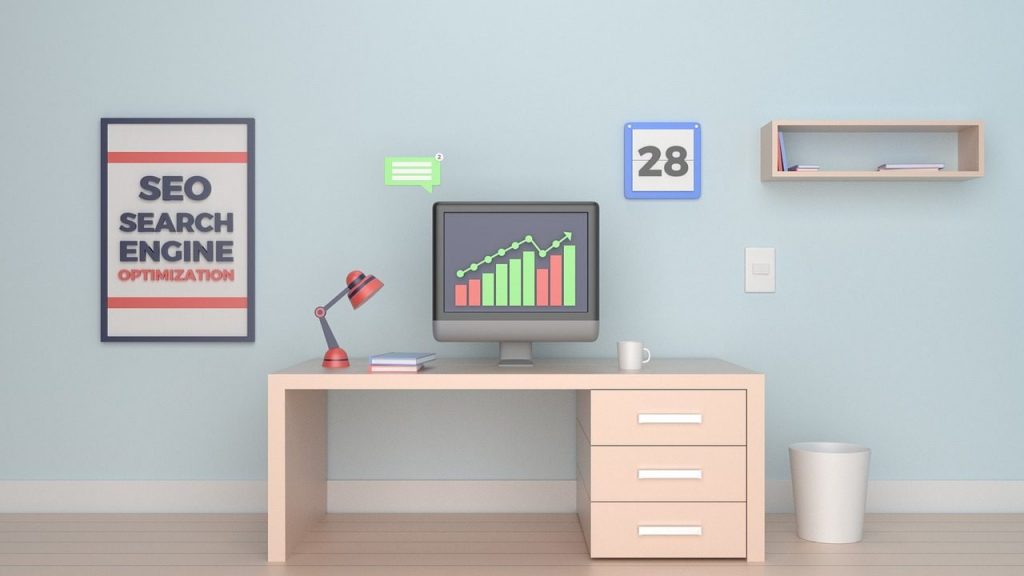Having a website for your business is all but required in 2021 and beyond. Many people start their search for products and services online, and you need to ensure potential customers can discover your product in these searches. Of course, you also need a solid SEO strategy to help your site or your domain name rank higher and attract more visitors and potential customers. But how can you go about ensuring your site is optimized well enough to show up consistently in search results?
Well that is exactly what this article is here to help you with. Read on to learn some incredibly helpful tips to ensure you design and maintain a site that ranks well.
Utilize the Right Keywords
Using the right keywords is often at the center of any good SEO strategy. If your site makes use of certain keywords, it can help the page (and thus, your site) rank highly when people search for those words on Google.
Perform some keyword research ahead of time to decipher exactly which keywords you should be ranking for. This will differ depending on your services, your industry, where you are located, and more.
In general, your site can rank for short-tail or long-tail keywords. Short-tail keywords get more traffic, but also have a lot more competition. On the other hand, long-tail keywords get less search volume, but you will have less competing sites to worry about. Many sites should be trying to rank for both short and long-tail as both can provide value.
Of course, be careful to avoid keyword stuffing. If you simply add important keywords into your content without any context or relevance, it’s not going to fool the algorithm. Every keyword needs to fit naturally with your content, so be careful. Lastly, don’t forget to check keyword rankings to monitor your SEO performance.
Make the Site Simple to Navigate
Among the most important parts of SEO in the modern day is to improve the user experience of a website. Your site can have all the keywords in the world, but if it doesn’t provide value and offer a good experience, you will struggle to rank highly. An important, yet underrated, aspect of user experience in the navigation of your website.
You need to make it easy for visitors to find the desired page, search for a certain piece of content or learn something about your business. If your navigation is confusing, overly-cluttered or designed poorly, it can severely impact the experience people have, in a negative way.
Using a simple drop-down menu for navigating your site, as well as a top banner with different pages/categories, might seem like boring options but they are popular for a reason. Don’t try and get too fancy with your navigation, as it will often simply end up confusing people.
Ensure the Website Loads Quickly
Another aspect of your user experience is how quickly your site loads. Many people today have very short attention spans and if your site doesn’t load within a fraction of a second, they will often go elsewhere. This will drastically hurt your bounce rate.
As a result, you need to do all you can to ensure quick loading speeds. Thankfully, there are many ways to speed up your website. This includes optimizing images, combining files, reducing server response time, using the right hosting provider and enabling compression. Additionally, leveraging virtual machine hosting can provide greater flexibility and scalability for your website.
Even a small amount of lag or loading time can turn people away and send your bounce rate skyrocketing, so don’t underestimate the importance of a quick and snappy website. If you plan to create and hosting sites for your business, be sure to find a reliable hosting provider to obtain the best user experience for your site visitors. It also helps with website maintenance
Confirm the Site is Optimized for Mobile Devices
If you are reading this article, there is a good chance you are doing it on a mobile device. This is because over half of all internet traffic comes from mobile devices in 2021. Because of this, if your site isn’t optimized to look great and respond well on all devices, your rankings will suffer.
Search engines and the algorithms they use to rank sites are focused more on the mobile performance of your site than ever before. In fact, some believe your mobile site is now more important than your desktop. A great desktop site is no longer enough to cover for a poor mobile experience. From the initial creation of your site, it should be designed with mobile in mind.
Be sure to test your site on different types of mobile devices to ensure it looks good, loads quickly and functions as it should. Also, do your best to keep navigation and layout simple for mobile devices, as well. Be careful when using large images and videos, as well, as they don’t always work as well on mobile devices as they do on a computer. Also, considering using a mockup generator can be helpful in designing and visualizing the navigation and layout for mobile devices.
Create Content Regularly
Few things drive more people to your website than the content you produce. This could be articles, how-to guides, videos, FAQ sections, infographics or anything else you deem valuable to your audience. These should aim to either entertain, educate or inform your audience about the things they want to know
The content should be titled well, laid out in a way that is easy to follow, and follow a well-thought-out structure. The exact type of content that ranks well for you and becomes popular can depend entirely on your industry and the pain points your company attempts to address.
Make sure the content is high-quality, and always aim to provide value with your content, not simply use it to rank higher. Search engine algorithms can see through lazy content that is simply created to rank certain keywords, so be authentic in your attempts to help readers.
Also, do your best to maintain consistency when it comes to your content. If you normally post three times a week, don’t go a month between posts as it could turn off your readers and lead to a decline in interest in your site. The types of things you post should also be related and relevant to the interests of your audience
Use Internal Links
Using internal links is another great way to help certain pieces of content rank better. These are links in your content that link to another page on your site. By using internal links, you can show Google or another search engine how each of your website pages are related.
Also, internal links can help people stay on your site longer, which will decrease your bounce rate. Of course, any links you add in should always be relevant and provide value and fit with the context of the content.
Attempting to get backlinks from other sites is also a good idea. While this is generally out of your control, as you grow and as your valuable content gets out there, there is a chance other sites may link back to your content, increasing it’s reach. This can help establish yourself as an expert or authority in your space, which is only positive for your business.
Don’t Underestimate the Importance of the Domain Name
The domain name that your website has is one of the things that a search engine will use to determine what your site is about. It is also crucial in helping establish yourself and you want a name that people will see and instantly know what you provide or who you are.
The name of your site should feature your brand or company name, if possible, and remain catchy. Your domain name could also incorporate the main keyword you are attempting to rank highly for.
The name should also reflect and relate to the industry you are in. If your domain name is completely unrelated to your brand and/or industry, it might simply confuse potential visitors and lower your organic visitors. However, you also want to choose a domain name that stands out from your competition and isn’t too similar to others.
Connect With Social Media
Connecting your website to your social media platforms is an important part of increasing traffic to your site and boosting the visibility of your content. Billions of people use social media, so if your business isn’t utilizing it, you are missing out. It is great for engaging with your audience, learning more about them and can be awesome for publicity.
You should be posting content to social media to expand reach, and asking followers what sorts of content they would like to see added to your site. While you might have a favorite platform, it is a good idea to remain active on multiple platforms, as they each have their own particular user base.
Be sure to also add some social media buttons on your site so visitors can check out your profiles and potentially share your content, if they so choose. In addition to SEO, social media is beneficial for market research, building authority and remaining authentic.
In conclusion, we hope that these tips have been able to help you design an SEO-friendly website that ranks well and brings success to your business.


